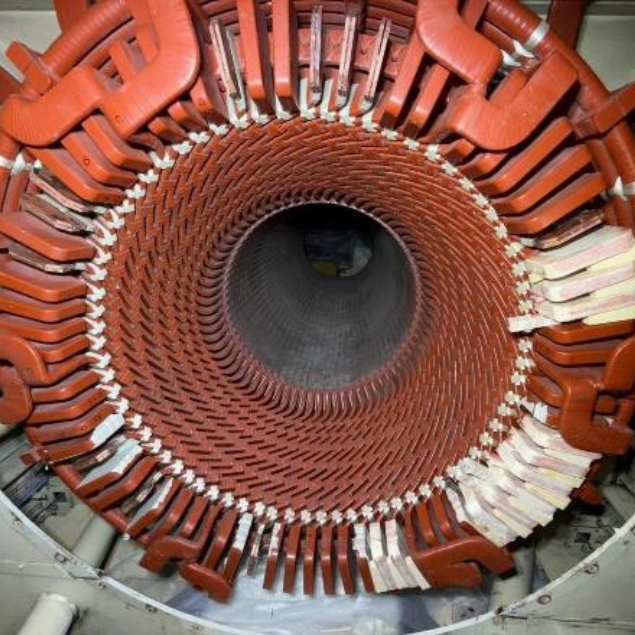Case studies
Gas Turbine Generator Condition Monitoring

Our Customer’s Challenge
The client faced significant reliability concerns with their 120MVA, 15kV, 3000RPM gas turbine generator following a routine inspection and diagnostic testing. The borescope inspection, partial discharge (PD) analysis, and natural frequency tests on the stator end windings yielded unsatisfactory results, indicating potential operational risks.
Key issues included widespread contamination of the stator end windings with dust and carbonised deposits, along with fretting dust mixed with oil, particularly at the turbine and exciter sides. Additionally, multiple endcaps were found to be cracked, with 22 damaged on the non-drive end (NDE) side and 35 on the drive-end (DE) side. These findings suggested deterioration that could compromise the generator’s performance and reliability, necessitating immediate corrective action.
The Quartzelec Solution
Quartzelec undertook comprehensive repair work on the stator winding, and replaced 22 cracked end caps on the NDE and 35 on the DE side. Additionally, to enhance stability and durability, Quartzelec installed additional blocking and wet ties between top and bottom bars before the end caps, reinforced the bus ring clamp, applied lashing, and varnished the entire stator. The varnish coating acts as a protective barrier, shielding the stator windings from contaminants, improving thermal resistance, and enhancing machine longevity.
Following the repairs, a series of diagnostic tests were conducted to validate the effectiveness of the solution including:
• Generator Stator Insulation Resistance & Polarisation Index Measurement
• Off-Line PD Tests
• Dielectric Loss Power Factor/Tan Delta Test
• Stator Winding Resistance
• EL CID Test
• Stator Wedge Tightness Test
• Bump Test (Natural Frequency Test)
• Borescope and Visual Inspection on Stator Bars and End Windings
Testing was conducted with the LIFEVIEW QTD offline PD analyser with a 50Hz power source, which confirmed significant improvement. The PD magnitude levels across all three phases showed lower discharge levels, with only minor concerns in the U phase, which remained within an acceptable range. The gap-type discharge was successfully mitigated by replacing end caps and adding stiffness blocks between coils. A bump test was also performed on the stator end windings and phase connections after repairs, with results confirming satisfactory performance.
Natural frequency measurements across all 72 winding coils demonstrated that frequencies remained at least 15-20% away from critical forcing frequencies (50Hz rotational speed and 100Hz twice line frequency), including previously identified defect locations at eight positions on the NDE side and ten on the DE side.
With all test results meeting acceptable limits, Quartzelec certified the unit as fit for service. To ensure ongoing reliability, continuous PD monitoring was recommended using the LIFEVIEW PDA II on the generator winding.
Key Benefits
- Enhanced Generator Reliability and Longevity reducing the risk of future failures and extending its operational lifespan
- Improved Electrical Performance confirmed using post-repair diagnostic tests which ensured improved insulation performance, minimising the likelihood of electrical breakdowns
- Increased Mechanical Stability of the stator winding, preventing excessive vibrations and ensuring the natural frequencies remain within safe operating margins
- Proactive Monitoring and Maintenance with the recommendation to install a permanent PD monitoring system to allow for an early detection of potential insulation issues, allowing for predictive maintenance and minimising unplanned downtime
#UnparalleledInEngineeringServices
Follow us on Facebook, X & LinkedIn
CS97
Rue des Finettes 54
1920 Martigny
Switzerland
















